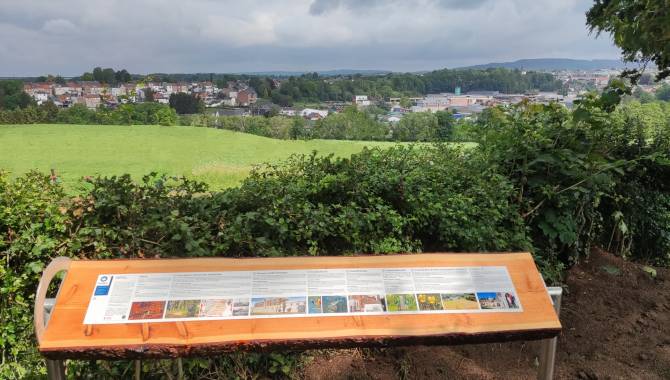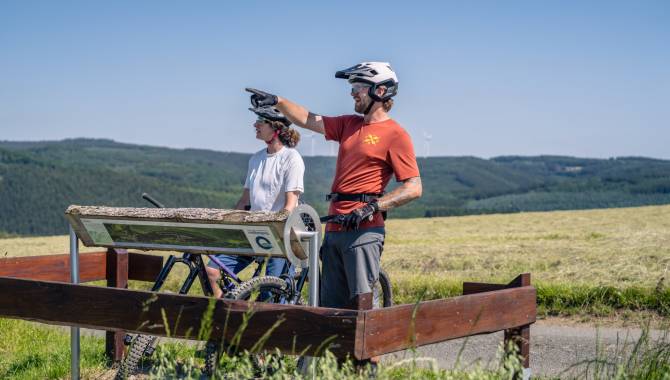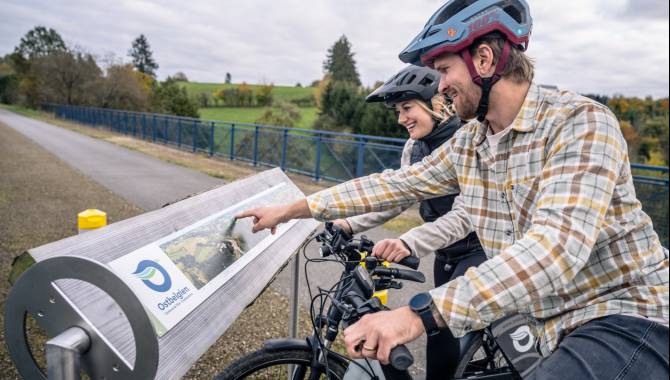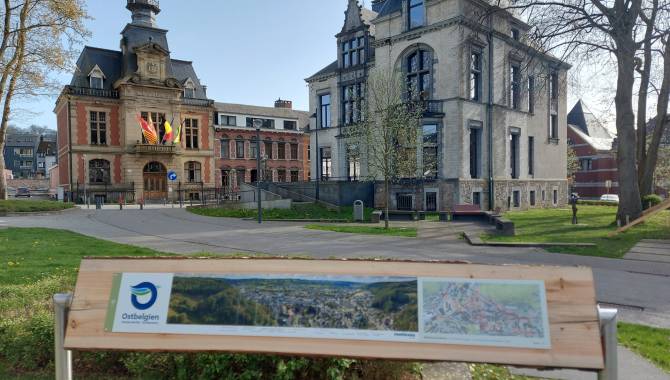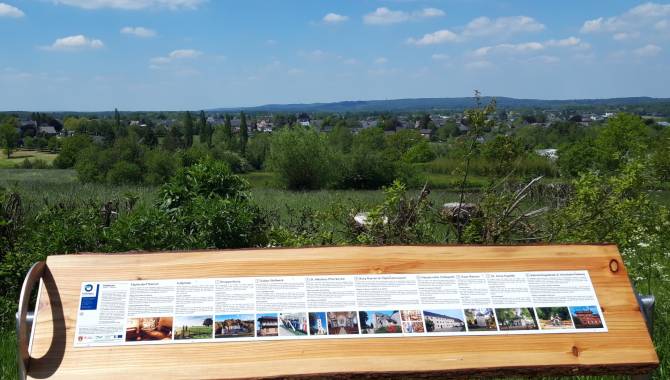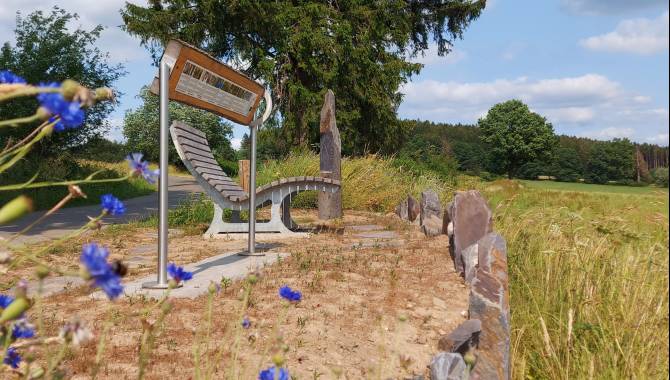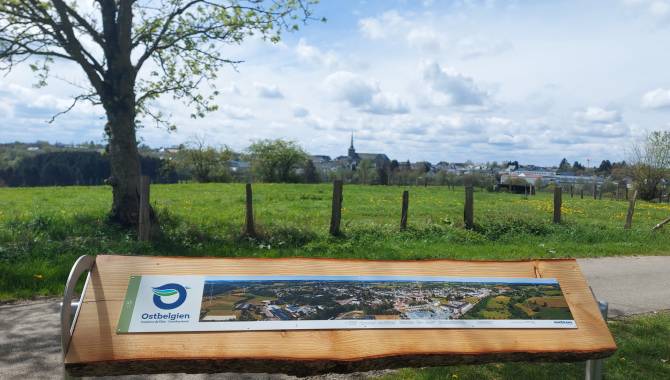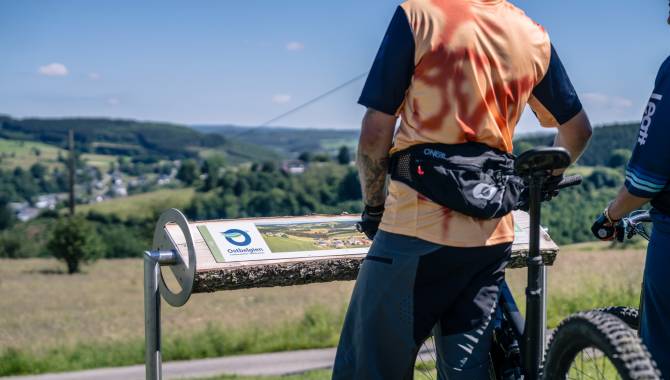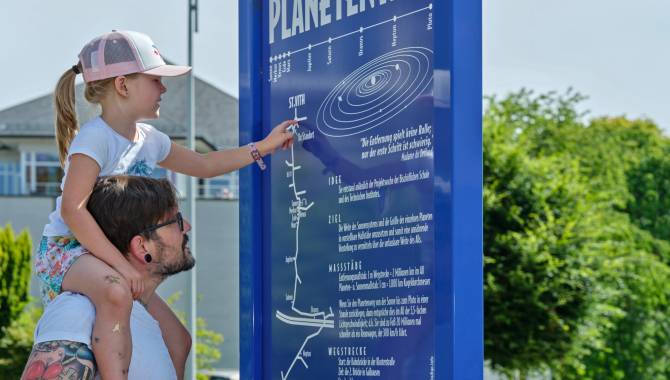The East Belgium sightseeing routes

View all sightseeing routes and choose your circuit.
Nature, culture, enjoyment: East Belgium!

Three routes, three themes, one destination: each route follows a common theme. In some cases this theme has been set for nature-lovers, in others for water-lovers, and in yet others for fans of mediaeval castle romanticism. As an encore, there's a church with an exciting construction history and sumptuous decoration along the way here and there. Elsewhere, a detour ends in front of a chapel in an enchanted location out in the middle of nowhere. Or it takes you past wayside crosses and shrines. The descriptions of each route have information on these too.
Impossible to get lost
This pleasure doesn't involve a lot of effort. As is usual with circuits, there's a starting point which is also the destination. But you can start anywhere at all on the route. Hexagonal signposts with the logo of the route you're on help you to keep your bearings. The signposting is often in German, that being the usual everyday language in large parts of East Belgium. Where the route crosses the language border to the French-speaking municipalities, the signposting is in French. But the logo of each route always remains the same. It may happen along the route that a sign is missing. And time has left its mark on some of the signs too. So in fact the map which has been created for each route is more important than the signs. It's almost impossible to go the wrong way, because of the direction that is marked meticulously on each map, and it's almost equally impossible to miss any of the sights along the route too.
Small detours, big surprises
Talking about 'worth seeing': not everything worth seeing lies directly on the route. Sometimes the detour you need to take is only a few hundred metres; sometimes it's a few kilometres. You can learn about these things in more detail in the description of the tour concerned. And another thing: don't allow yourself to be disconcerted by the changeover from the wide nationalstrasse to narrower roads. It's on the less travelled byways that the unspoiled charm of East Belgium can be discovered. And now let's get going!
Tour by tour more diversity
Anyone who travels all three of these routes will get to know East Belgium in all its diversity. With the country around Eupen, the High Fens, the Belgian Eifel and the foothills of the Ardennes, the three circuits cover the landscape, cultural and culinary highlights of the border region. So it's definitely worth coming back to do another route. Or even better, why not just stay a little longer and enjoy East Belgium tour by tour. Bonne route! – Gute Fahrt!
The tour guide
With the 'East Belgium Tours' catalogue, the East Belgium Tourist Agency invites you to go on three circuit tours, each of which is worth a journey in its own right. The publication is available free and provides information about three signposted theme tours through the country around Eupen, the High Fens and the Eifel-Ardennes region.
>> download the tour guide for free (only available in german, french & dutch)
The fortress route
Three borders, lots of fortresses, manor houses and castles
The fortress route takes you almost right up to the gates of Aachen. Just like the Our valley route in the south, this circuit also goes through an area where the borders of three countries converge. The symbol of this 79-kilometre route is three boundary stones. Depending on the language area you're in, the signposting changes from the German 'Burgenroute' to the French 'route des châteaux', or signposting in words may have been dispensed with completely, just sticking to the symbol instead.
Four large municipalities, a spectacular railway bridge, chapels, panoramic views out over the charming landscape of the border country, but above all over two dozen fortresses, manor houses and castles line this route. There are also a number of other ruins worth seeing, a little way off the route. In the shadows they cast, East Belgium, the Netherlands and, on the German side, the country around Aachen snuggle close together. A First World War memorial or a military cemetery reminds you that the neighbourhood has not always been peaceful. But that's all over. These fortresses haven't served a defensive purpose for a long time now.
Each detour a surprise
From fortified towers with embrasures, known as keeps, comfortable, airy castles were built as early as the 17th and 18th centuries. Today, they are put to various different uses. In some cases the property is a residence, in others a museum or a youth centre. But the agglomeration of these mighty walls remains a cultural asset that draws visitors from all parts of the border country. Many stately homes are privately owned and can only be visited on the outside. But it's worth coming to see them just for the magical sight of those towers, oriels and moats.
The fortress route in particular is full of surprising discoveries, and that is particularly true a little way off the route. A brief detour, just a few hundred metres or sometimes a few kilometres, and there you are again, looking at a jewel of architecture. A glance at the description of the tour and the map that goes with it helps to find the right route.
The Our valley route

Down in the deep south there's a river that gurgles
The Our valley route, some 100 kilometres in length, first whisks you away into the heart of the East Belgian Eifel and then off into an unspoiled river valley down in the deep south of East Belgium. You're well away from it all in these majestic woods along the route. Twists and bends in the river slow your travel down. Relaxing, you drop down a gear. There are lively villages and picturesque farms waiting to be discovered.
It's a lovely route to follow. At some places along the bank, Germany is just a stone's throw away across the Our, which gurgles contentedly on its way. Right down in the south, the route runs for a few kilometres through the Grand Duchy of Luxembourg. Yet the transition is just as fluent as the Our itself, which doesn't allow itself to be impeded on its course across national borders. And that also applies to neighbourhood relations in the East Belgian border country.
The exchange among neighbours has more influence on everyday life today than the border itself, for the defence of which in former times fortresses such as the mediaeval Burg Reuland were built. It's not for no reason that the modern culture, conference and exhibition centre in St. Vith, the largest town on the Our valley route, bears the name 'Triangel'. That name says it all.
Another tip – short cut possible
It's possible to take a short cut between Setz and St. Vith. This divides the tour up into a north and a south loop. Both for the route as a whole and for either loop, St. Vith is recommended as the ideal starting point.
Fens-and-lakes route
Nature in widescreen format
With a length of 150 kilometres, the fens-and-lakes route is the longest of the three motor tours. Yet you can manage it without any stress at all. The start is in the French-speaking town of Malmedy. This lively little town smartened up its tidy centre just very recently. Hautes Fagnes is the name of this surreal vastness with its resilient peat surfaces, dark ponds, moors and slender birchwoods to the north of Malmedy. And a few kilometres further on, you find you've crossed the language border.
South-east of Eupen, the principal town in East Belgium's German-speaking community, this unique biotope is known as the High Fens. On both sides of the language border there is a carpet of moor grass, rushes and bluish-purple heather as far as the eye can see. On no other route through East Belgium is this vastness more noticeable than on the archaically beautiful plateau of the High Fens. And talking of plateau: at 694 metres, the Signal de Botrange, halfway between Malmedy and Eupen, is not only the highest point in the High Fens, but also the highest point in the whole country.
Another tip – short cut possible
You then continue a little way across the border, this time on a visit to the eastern neighbour Germany near Kalterherberg. Further south, reservoirs like those at Robertville and Bütgenbach invite you to take a rest at the waterside. And anyone who finds that he or she has taken a liking to it can simply come back at the end of the route – to bathe, paddle about or just enjoy doing nothing. A few more little detours, a few more enchanted villages, and then you recross the language border: soon after that, you're back in Malmedy.
Between Sourbrodt and Mont the route can be cut short, or divided into two stages of about the same length, a north loop and a south loop.






